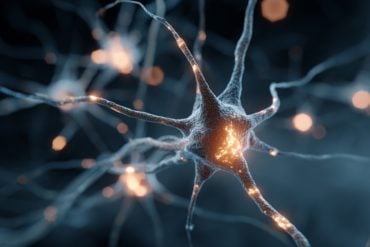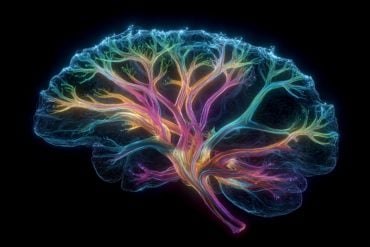Summary: According to researchers, collective memories are influenced both by the person recalling the information and by those sharing memories with a group.
Source: Princeton.
Consider your memories of 9/11. What time was it when you learned about the attack? Where were you? Who were you with?
By simply retrieving these memories, you are reinforcing how you remember this event. At the same time, you’re pushing out more trivial memories, like what time you ate breakfast that day or what time you went to sleep.
But what happens when we communicate about these memories with others? Do our own recollections start to shift? Do our conversations shape how other people remember, too?
People do, in fact, synchronize what they remember and what they forget after sharing memories with one another, according to research published by Princeton University’s Woodrow Wilson School of Public and International Affairs. Known as mnemonic convergence, these collective memories are influenced both by a person recalling information and by those individuals sharing memories within a group.
The results, published in the Proceedings of the National Academy of Sciences (PNAS), are especially relevant to policymakers involved with information sharing. For example, if communities have common misconceptions about a certain topic — like how the Zika virus is spread — policymakers can bust these myths by repeatedly sharing accurate messaging.
“If you’re a policymaker trying to annihilate misconceptions, you should identify a piece of information that’s relevant, accurate, and, importantly, conceptually related to the misconception,” said lead author Alin Coman, assistant professor of psychology and public affairs. “Keep practicing that information. Send repeated messages into the community. If people care about the topic, they are going to talk to one another about it and by spreading the accurate information, psychological research shows, they will likely forget about the misconception.”
Coman and his co-authors — Ida Momennejad, a postdoctoral fellow at Princeton; Andra Geana, a postdoctoral research associate from Princeton; and Rae Drach, a graduate research assistant at the University of Albany — recruited 140 participants through Princeton University’s online recruitment system to conduct the study.
Participants were grouped into 10-member communities and came together in the same classroom, sitting at computer terminals. Participants used a program called Software Platform for Human Interaction Experiments (SoPHIE) to communicate.
“We designed this software platform to expedite the communication process,” Coman said. “All phases of the study took about 30 to 40 minutes for each group to complete. It’s a very fast way to have these people communicate, and computer chatting makes this much more standardized. We were able to control the network structure and properly study it.”
In the first phase of the study, participants read four random pieces of information about different American Peace Corps volunteers. The stories centered on Rachel, a volunteer who worked on environmental protection in South America; Alex, who was involved with refugee assistance in Europe; Christine, who focused on post-disaster recovery in Asia; and Jim, who was engaged with HIV/AIDS prevention in Africa. Each volunteer’s story included a picture of the person working in the field.
“We chose these fictitious scenarios because we reasoned that participants are going to care more about these types of materials than they would about a random list of words,” Coman said.
Afterward, participants were asked to remember the information they studied. They were given the name of each volunteer as a cue and instructed to type out on the computer what they could remember about that volunteer.
Next, participants chatted online with one another about the stories. Each participant chatted with three different people in two-and-a-half-minute conversations. Participants took turns sharing the information they remembered about each Peace Corps volunteer.
Following the conversations, each participant was asked to remember the information originally presented about the volunteers. As in the second phase, they were given the name of each volunteer as a cue.

Based on both recall phases, the researchers calculated how similar the individual memories were within each 10-member community. The results were in alignment with what the researchers had predicted: conversationally sharing stories with others influences the degree to which individuals of a group end up remembering the story in similar ways.
“Our study shows that when we talk about memories of collectively experienced events with others, we start remembering these memories in similar ways. Importantly, as a group, we also tend to forget the same information following these conversations. We are, in essence, synchronizing our memories at a community level,” Coman said.
The study is a first step toward understanding collective memories in a group network. Coman and his collaborators are currently working toward studying larger group networks to see how group size influences the degree of mnemonic convergence. They also are investigating how individuals come to experience similar emotions following conversations about topics relevant to a certain group.
“Understanding the formation of collective memories is of utmost importance,” Coman said. “They are central to human functioning. On one hand, these shared memories affect people’s attitudes, their decisions and how they collectively solve problems. On the other hand, these findings have a more applied scope: policymakers could use them to measure and forge convergent memories in communities affected by epidemics of biological or social nature, like knowledge about the Zika virus or the propagation of stereotypes.”
Source: Robert Sanders – Princeton
Image Source: NeuroscienceNews.com image is in the public domain.
Original Research: Abstract for “Mnemonic convergence in social networks: The emergent properties of cognition at a collective level” by Alin Coman, Ida Momennejad, Rae D. Drach, and Andra Geana in PNAS. Published online July 19 2016 doi:10.1073/pnas.1525569113
[cbtabs][cbtab title=”MLA”]Princeton. “Sharing Stories Synchronizes Group Memories.” NeuroscienceNews. NeuroscienceNews, 8 September 2016.
<https://neurosciencenews.com/group-memory-stories-4995/>.[/cbtab][cbtab title=”APA”]Princeton. (2016, September 8). Sharing Stories Synchronizes Group Memories. NeuroscienceNews. Retrieved September 8, 2016 from https://neurosciencenews.com/group-memory-stories-4995/[/cbtab][cbtab title=”Chicago”]Princeton. “Sharing Stories Synchronizes Group Memories.” https://neurosciencenews.com/group-memory-stories-4995/ (accessed September 8, 2016).[/cbtab][/cbtabs]
Abstract
Mnemonic convergence in social networks: The emergent properties of cognition at a collective level
The development of shared memories, beliefs, and norms is a fundamental characteristic of human communities. These emergent outcomes are thought to occur owing to a dynamic system of information sharing and memory updating, which fundamentally depends on communication. Here we report results on the formation of collective memories in laboratory-created communities. We manipulated conversational network structure in a series of real-time, computer-mediated interactions in fourteen 10-member communities. The results show that mnemonic convergence, measured as the degree of overlap among community members’ memories, is influenced by both individual-level information-processing phenomena and by the conversational social network structure created during conversational recall. By studying laboratory-created social networks, we show how large-scale social phenomena (i.e., collective memory) can emerge out of microlevel local dynamics (i.e., mnemonic reinforcement and suppression effects). The social-interactionist approach proposed herein points to optimal strategies for spreading information in social networks and provides a framework for measuring and forging collective memories in communities of individuals.
“Mnemonic convergence in social networks: The emergent properties of cognition at a collective level” by Alin Coman, Ida Momennejad, Rae D. Drach, and Andra Geana in PNAS. Published online July 19 2016 doi:10.1073/pnas.1525569113






